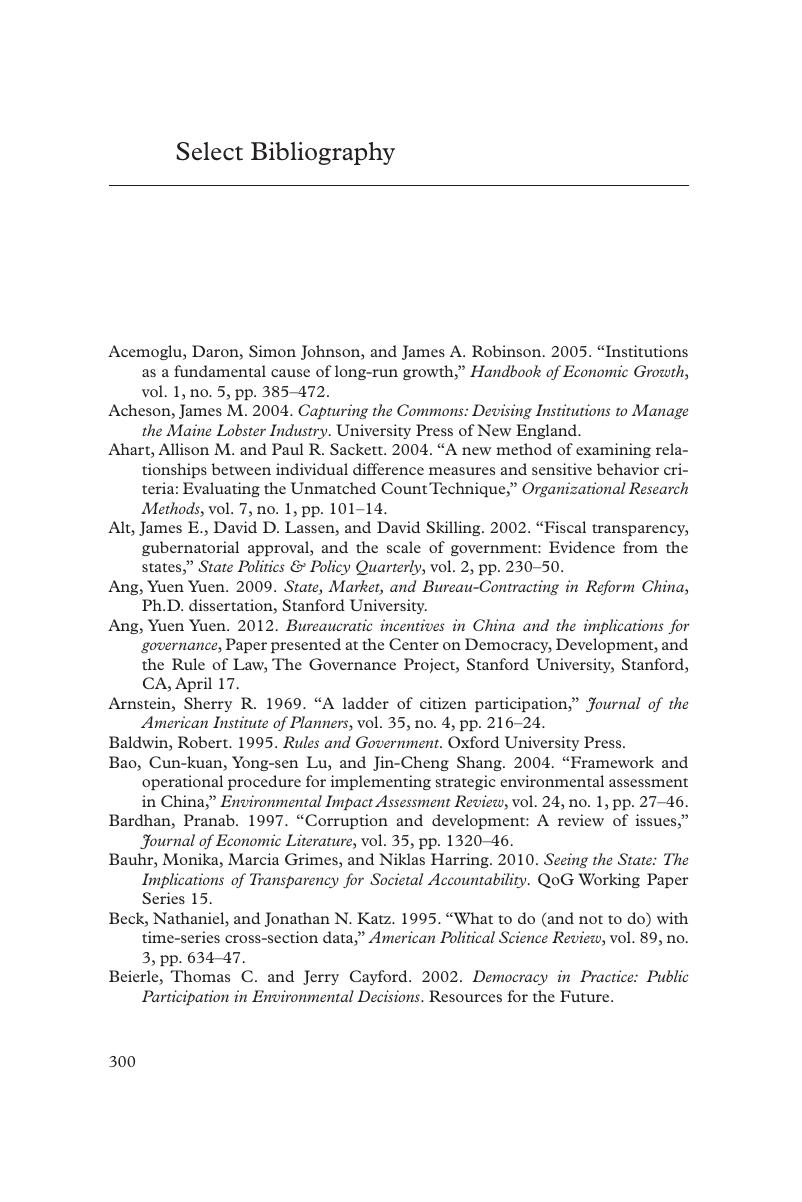Book contents
- China’s Governance Puzzle
- China’s Governance Puzzle
- Copyright page
- Dedication
- Contents
- Figures
- Tables
- Preface
- Abbreviations
- 1 China’s Approach to Governance Reform
- 2 Concept, Chronology, and Drivers of Transparency Reform
- 3 Transparency and Corruption: Analysis of Variation Within China and Hypothesis Testing
- 4 Comparing Approaches to Combating Corruption: The Guangdong and Chongqing Models
- 5 Concept, Chronology, and Drivers of Participation Reform
- 6 Participation and Compliance: Analysis of Variation and Hypothesis Testing
- 7 Making Policy in Public: A Comparison of Three Chinese Provinces
- 8 The Road Ahead
- Select Bibliography
- Index
- References
Select Bibliography
Published online by Cambridge University Press: 23 March 2017
- China’s Governance Puzzle
- China’s Governance Puzzle
- Copyright page
- Dedication
- Contents
- Figures
- Tables
- Preface
- Abbreviations
- 1 China’s Approach to Governance Reform
- 2 Concept, Chronology, and Drivers of Transparency Reform
- 3 Transparency and Corruption: Analysis of Variation Within China and Hypothesis Testing
- 4 Comparing Approaches to Combating Corruption: The Guangdong and Chongqing Models
- 5 Concept, Chronology, and Drivers of Participation Reform
- 6 Participation and Compliance: Analysis of Variation and Hypothesis Testing
- 7 Making Policy in Public: A Comparison of Three Chinese Provinces
- 8 The Road Ahead
- Select Bibliography
- Index
- References
Summary

- Type
- Chapter
- Information
- China's Governance PuzzleEnabling Transparency and Participation in a Single-Party State, pp. 300 - 322Publisher: Cambridge University PressPrint publication year: 2017



